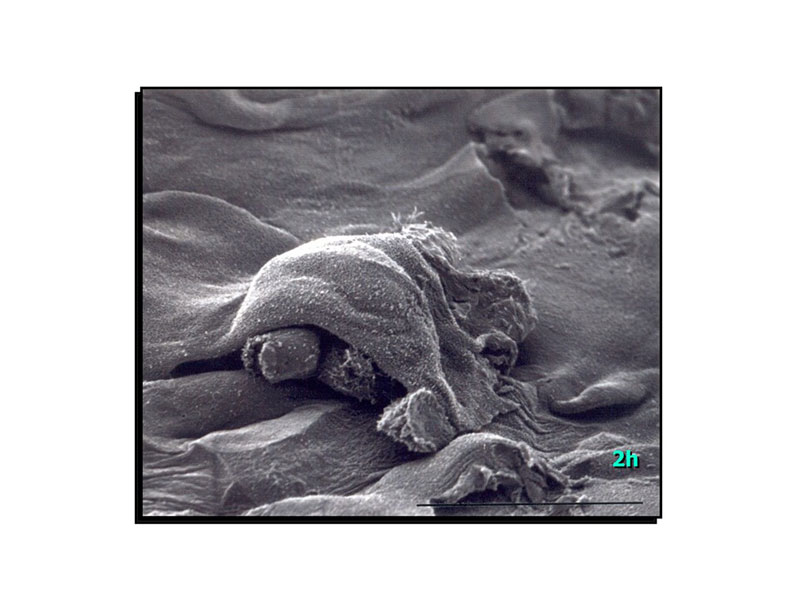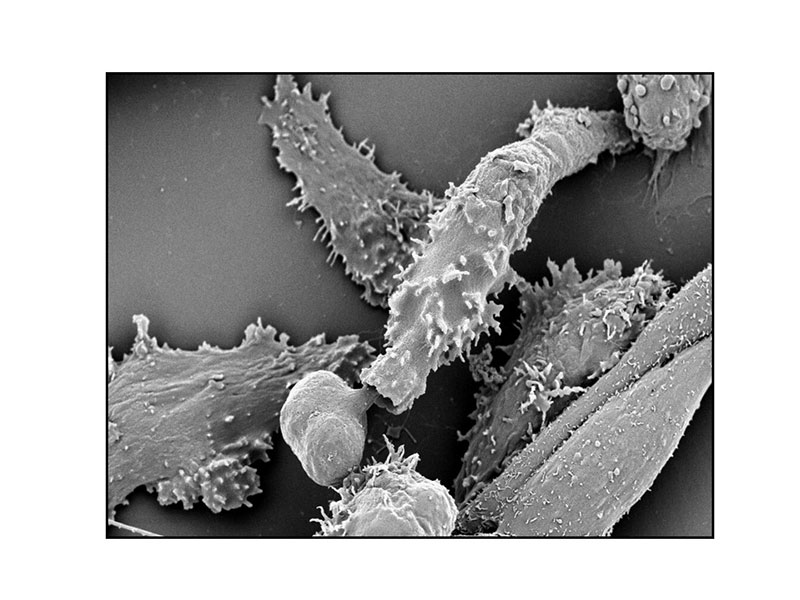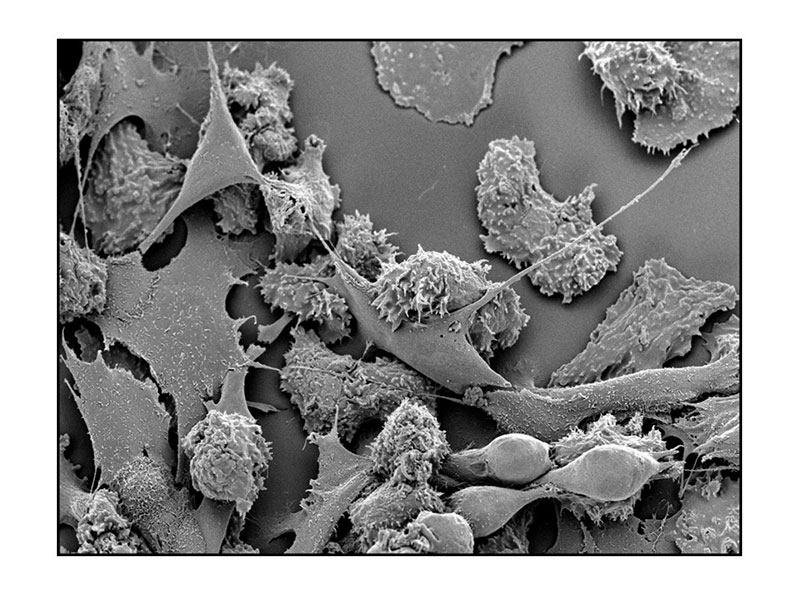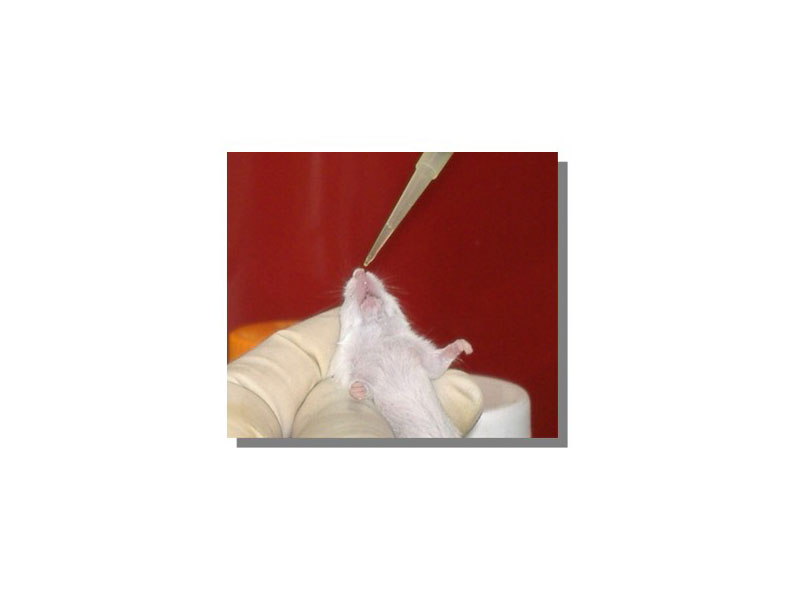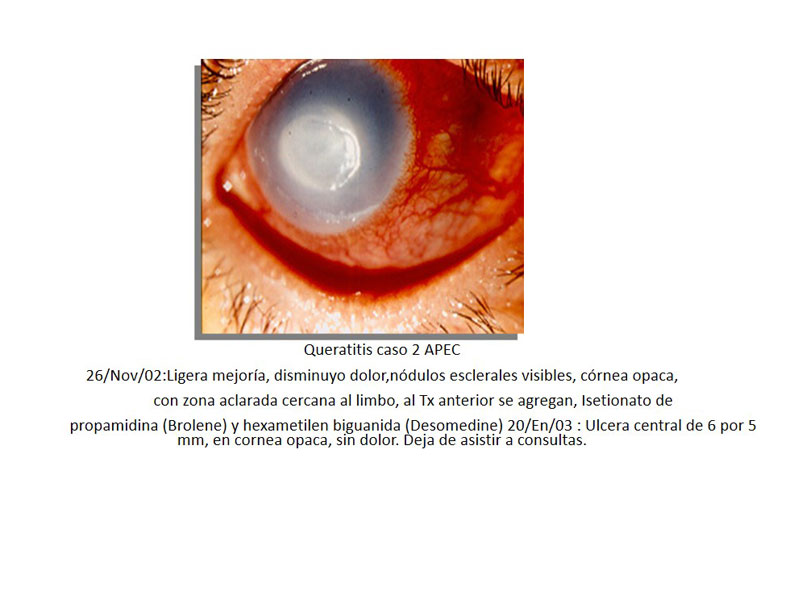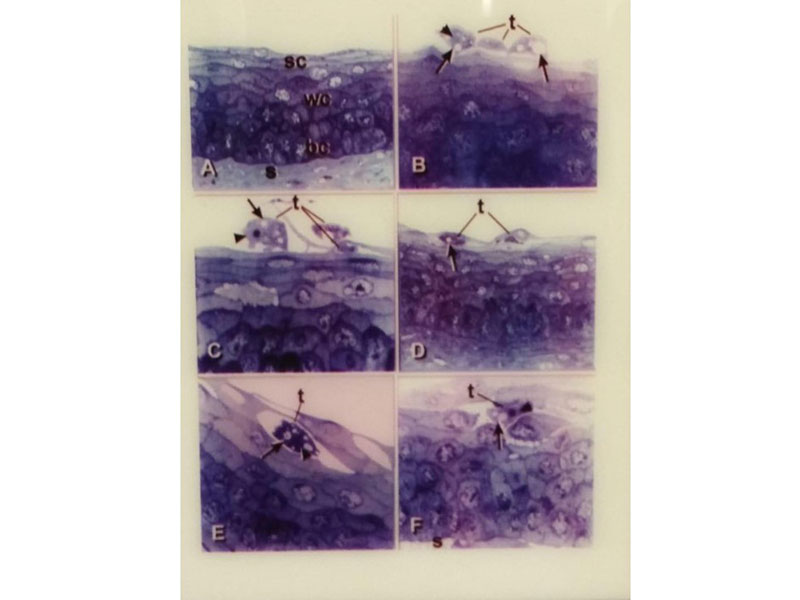
| Location within campus: | Edificio A4 Laboratorio 3 |
| Phone: | – |
| Head of Laboratory: | Dra. en Ciencias Maritza Omaña Molina Profesor Titular “B” Definitivo de Tiempo Completo. maritzaomanam@yahoo.com.mx |
| Researchers affiliated to the laboratory: | M. en M. María Dolores Hernández Martínez alol_madole@yahoo.com.mx Dra. Elizabeth Alejandrina Guzmán Hernández shponia2000@yahoo.com.mx María del Rocio Ibarra Montes mibarra4@hotmail.com |
| Technicians affiliated to the laboratory: | M. en C. David Segura Cobos seguracd@unam.mx |
| Research lines per researcher: | Description of the pathogenicity mechanisms of amphizoic amoebae through in vitro and in vivo models in the cornea, CNS and skin. Diagnosis of pathologies caused by amphizoic amoebae. |

Amphiphoic amoebae are a group of free-living protozoa that play a relevant ecological role as controllers of bacterial populations, in addition, they have the ability to infect people and animals, hence their name that describes them as organisms with double life. Naegleria fowleri causes Primary Amebic Meningoencephalitis, Balamuthia mandrillaris and Acanthamoeba spp. they are etiological agents of granulomatous amoebic encephalitis (AGE) and skin infections; Acanthamoeba also causes amoebic keratitis (AK), a chronic and difficult-to-resolve corneal infection that mainly affects contact lens wearers. Their importance lies in their high mortality when they infect the CNS, as well as a significant loss of visual acuity, corneal transplantation and even loss of the eyeball in AK; Until now, there is no treatment of choice for the diseases caused by these amoebas.
In our laboratory we study the pathogenicity mechanisms of Acanthamoeba spp. through EAG models in mice, in hamster cornea and in nude mouse skin, which has made it possible to provide knowledge about the invasion mechanisms of these amoebae in their different tissues, with the main purpose of finding therapeutic targets in the Search for drugs of choice that together with an early diagnosis allow a better prognosis in diseases caused by amphizoic amoebae.

Maritza Omaña-Molina, Virginia Vanzzini-Zago, Dolores Hernández Martínez, María Reyes, Ismael Castelan-Ramírez, Perla Hernández-Olmos, Lizbeth Salazar-Villatoro, Arturo Gonzalez-Robles, Elizabeth Ramírez-Flores, Christopher Servín-Flores, Víctor Flores-Alvarado, Marino Alcántara-Castro, Jacob Lorenzo-Morales. Acanthamoeba keratitis in Mexico: report of a clinical case and importance of sensitivity assays for a better outcome. Experimental Parasitology. (2019). 196 (2019). 22-27. doi: 10.1016/j.exppara.2018.11.005. Epub 2018 Nov 22. ISSN: 0014-4894 impreso; ISSN: 1090 2449 electrónico. Factor de impacto 1.859.
Omaña-Molina, M., Sánchez-Rocha, R., Hernández-Martínez, D., Romero, Grijalva. M., Salinas-Lara, C., Rodríguez-Sosa, M., Juárez-Avelar, I., Salazar-Villatoro, L., González-Robles, A., Mendez-Cruz, A. R., Aley-Medina, P., Espinosa-Villanueva, J., Castelan-Ramírez, I. Lorenzo-Morales, J. (2017). Type 2 diabetes mellitus BALB/c mice are more susceptible to granulomatous amoebic encephalitis: immunohistochemical study. Experimental Parasitology.183:150-159.2017. doi: 10.1016/j.exppara.2017.09.001. ISSN: 0014-4894 impreso; ISSN: 1090 2449 electrónico. Factor de impacto 1.724
Omaña-Molina Maritza, Hernández-Martínez Dolores, Sánchez-Rocha Raquel, Cárdenas-Lemus Ulises, Salinas-Lara Citlaltepetl, Méndez-Cruz Adolfo René, Colín-Barenque Laura, Aley-Medina Patricia, Espinosa-Villanueva Jesús, Moreno-Fierros Leticia, Lorenzo-Morales Jacob. (2017) In vivo CNS infection model of Acanthamoeba genotype T4: the early stages of infection lack presence of host inflammatory response and are a slow and contact-dependents process. Parasitol Res. 116(2):725-733. DOI:10.1007/s00436-016-5338-1. ISSN:0932-0113 impreso; ISSN:1432-1955 electrónico.
Omaña-Molina M, Gonzalez-Robles A, Salazar-Villatoro L, Lorenzo-Morales J, Cristóbal-Ramos AR, Hernández-Ramírez VI, Talamás-Rohana P, Mendez-Cruz R and Martínez-Palomo A. Re-evaluating the role of Acanthamoeba proteases in tissue invasion: observation of cytopathogenic mechanisms on MDCK cell monolayers and hamster corneal cells. (2013). BioMed Research International, Special issue: Immunology and Cell Biology of parasitic Diseases. 2013:461329. doi: 10.1155/2013/461329. SSN: 2314-6133 impreso; ISSN: 2314-6141 electrónico.
Omaña-Molina M., González-Robles A., Salazar-Villatoro L. I., Cristóbal-Ramos A. R., González-Lázaro M., Salinas-Moreno E., Méndez-Cruz R., Sánchez-Cornejo M., De la Torre-González E., Martínez-Palomo A. (2010). Acanthamoeba castellanii: Morphological analysis of the interaction with human cornea. Experimental Parasitology.126(1):73-78. ISSN: 0014-4894 impreso; ISSN: 1090 2449 electrónico.

| Prospective Thesis Candidate Profile: | Students of Medicine, Biology, Optometry, interested in biomedical research on opportunistic protozoa. |
| Service Social Data: | “Amoebic keratitis” with emphasis on the diagnosis, treatment, biological description of the isolates and implementation of experimental models of SAE and AK. Key: 2020-12 / 63-26. STUDY OF THE UTILITY OF NATURAL THERAPEUTIC RESOURCES IN CHRONIC DEGENERATIVE DISEASES. Key: 2020-12 / 63-61. |

